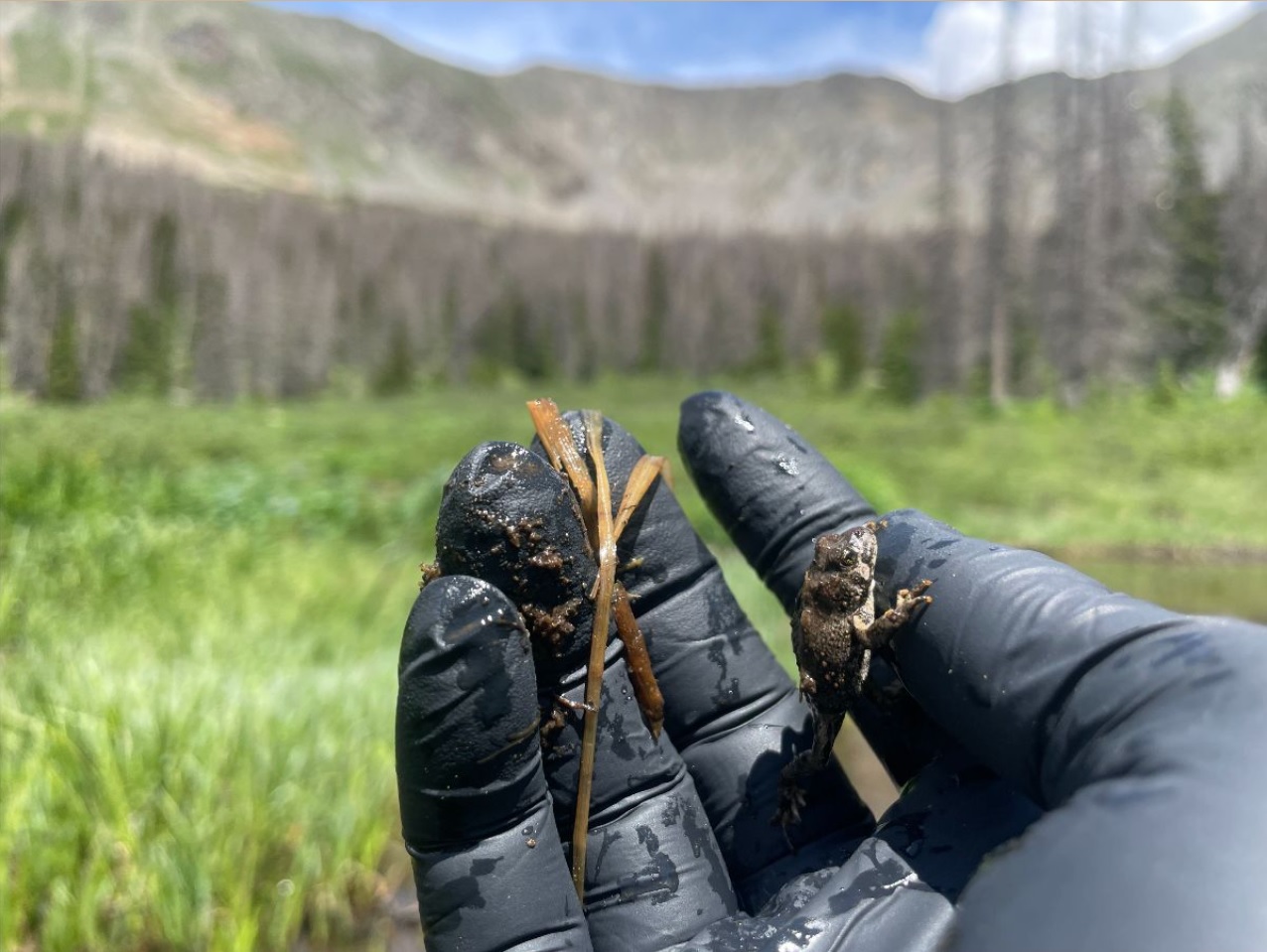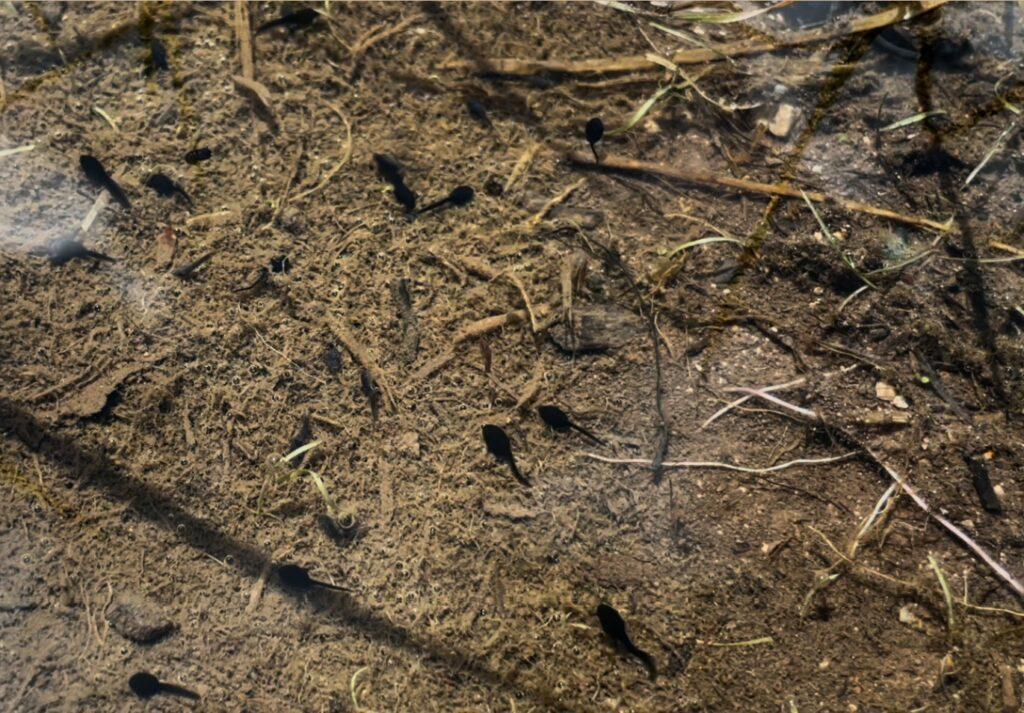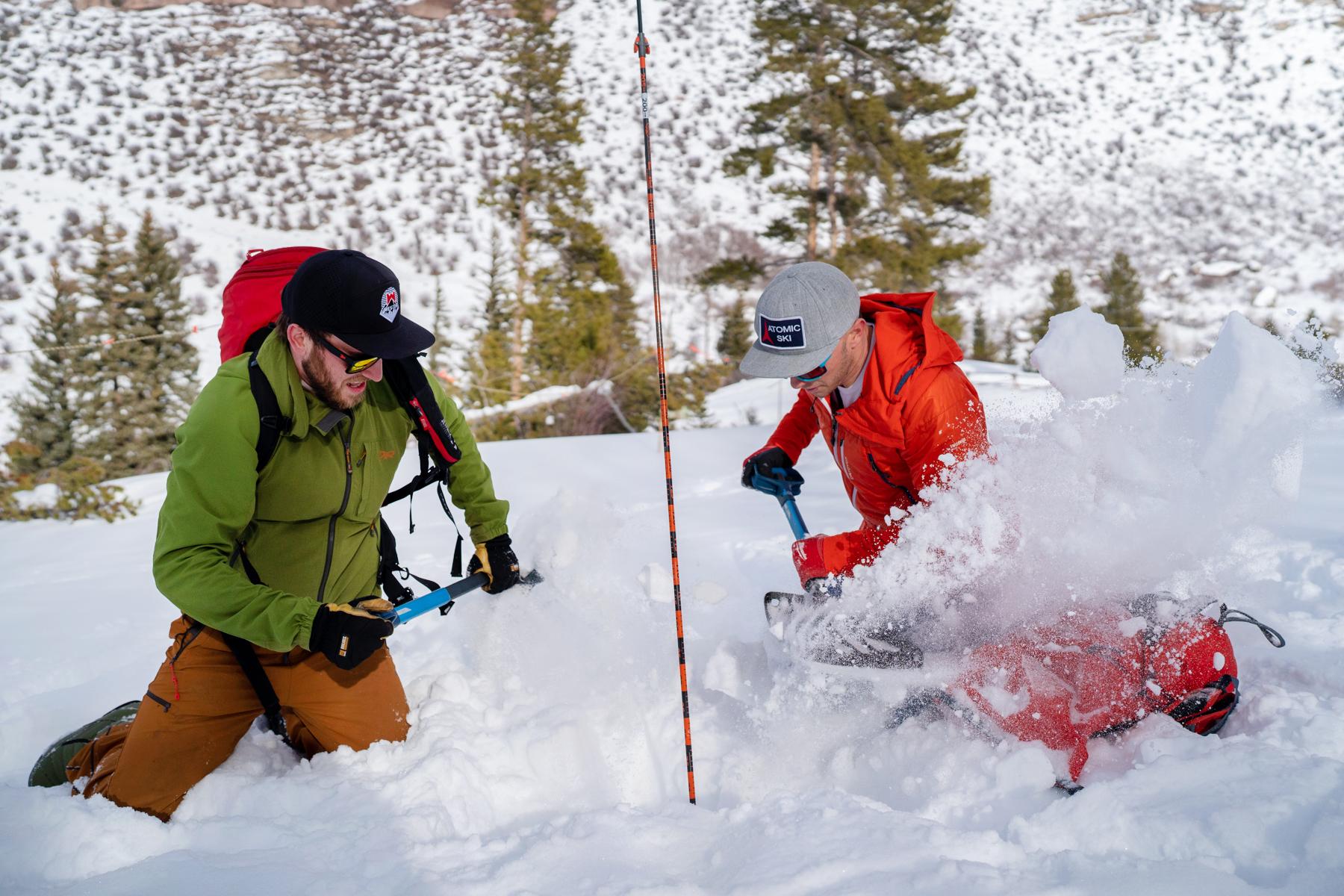
Roughly 20 years of reintroduction efforts appear to be paying off for Colorado biologists working to save the state’s boreal toad population.
Habitat loss and a deadly amphibian fungus have decimated the toad species, which was once common in the southern Rocky Mountains. Now, for the first time, there are signs of natural reproduction among toads Colorado Parks and Wildlife (CPW) released at a site above Pitkin.
CPW announced Monday that researcher Daniel Cammack and his team recently found wild tadpoles swimming in a pond at the site. In a statement, Cammack, a native aquatic species biologist for CPW, called the discovery “a monumental day.”
“For years, we have been watching multiple age classes thrive at this site, so we had high hopes this was going to become a self-sustaining breeding population and a successful translocation,” he said. “This is the first year we’ve seen breeding occurring in this wetland, and it is evidence of that success.”
If the new, wild tadpoles survive and grow into adult toads, the Pitkin site would be Colorado’s second reintroduction site with confirmed natural reproduction. CPW said the first site is near Cameron Pass in northern Colorado.
“This day is a culmination of a lot of dedicated people’s efforts, including multiple biologists, technicians and hatchery personnel,” Cammack said. “Everyone who has been involved in this project has poured their heart and soul into it. That's what it takes to get here.”
The Pitkin project began in 2013 when CPW identified the site as a potential spot for translocation. CPW and its partners released 600 adult boreal toads at the location in 2017 as a test group, and they’ve stocked the area with an estimated 20,000 tadpoles in the years since.
CPW says it collected most of those tadpoles as eggs from backcountry toad populations and raised them at its Native Aquatic Species Restoration Facility in Alamosa. The Denver Zoo Conservation Alliance donated another 570 tadpoles.

Other partners included the states of New Mexico, Utah and Wyoming, as well as the U.S. Fish and Wildlife Service, U.S. Forest Service, Bureau of Land Management and National Parks Service. Universities across the region “contributed critical research,” CPW said.
Boreal toads live near streams and lakes in mountainous habitats between 7,000 and 12,000 feet of elevation. They once thrived in the Rockies, thanks to the alpine climate and hilly meadows.
“The boreal toad is a truly unique and resilient amphibian,” said Cammack. “We are up at 11,500 feet, at timberline practically. They gut out big winters covered by multiple feet of snow and experience only three to four months of warm growing season.”
Over the last 25 years, however, the chytrid fungus has wiped out entire toad populations, sometimes in a matter of months. The fungus causes a disease that researchers have linked to the extinction of more than 90 amphibian species worldwide, and it has been connected to large declines observed in more than 500 others.
The western United States has one of the world’s highest incidences of the disease. It has been confirmed in 46 states and on every continent except Antarctica.








